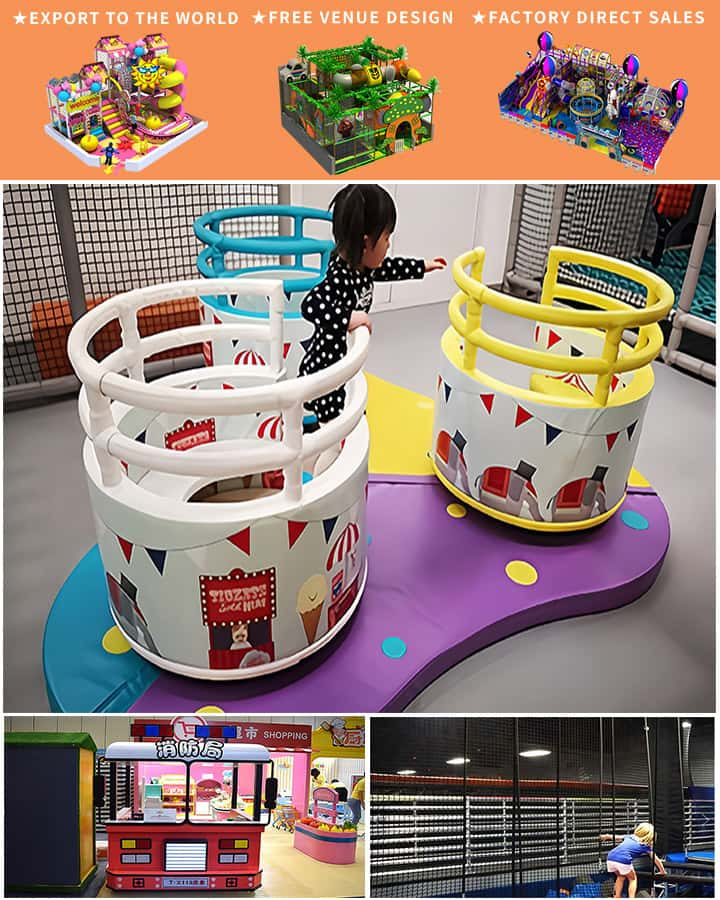Starting an indoor playground business can be a rewarding venture, blending creativity with commercial acumen. As urbanization increases and families seek engaging environments for children, the demand for indoor playgrounds has been on the rise. This article provides a detailed guide to help you navigate the process of opening your own indoor playground business, covering everything from initial planning to execution and beyond.
Market Research and Feasibility Study
Before diving into the logistical aspects, it’s crucial to conduct thorough market research. Identify the demographics of the area where you plan to set up shop. Consider factors such as population density, average income levels, and the number of existing entertainment options for children. Additionally, analyze competitors in the vicinity to understand what they offer and identify any gaps in the market that you could fill.
A feasibility study will help assess the financial viability of your business idea. Calculate potential startup costs, including leasing or purchasing a property, equipment, insurance, staff salaries, and marketing expenses. Estimate revenue projections based on ticket sales, membership plans, party bookings, and other potential revenue streams.
Business Plan Development
With solid market research in hand, draft a comprehensive business plan. Outline your mission statement, vision, and values. Define your target market and develop marketing strategies to reach them effectively. Create a detailed operational plan that includes daily activities, supplier management, safety protocols, and customer service policies.
Financial forecasts are a critical component of your business plan. Include projected income statements, cash flow analyses, and balance sheets for at least the first three years. Seeking advice from a financial advisor might be beneficial to ensure accuracy and realistic projections.

Legal Considerations and Permits
Operating an indoor playground involves navigating various legal requirements. Register your business according to local regulations, choose an appropriate business structure (e.g., sole proprietorship, LLC), and obtain the necessary licenses and permits. These may include a general business license, health and safety permits, and zoning approvals.
Insurance is another critical aspect. Obtain comprehensive liability insurance to protect against injuries, property damage, and other potential risks. Consult with an insurance broker to ensure you have adequate coverage tailored to your specific needs.
Location and Facility Design
Choosing the right location is paramount. Look for a space that is easily accessible, has ample parking, and is situated in a family-friendly area. The facility should have high ceilings and sufficient square footage to house various play structures without feeling cramped.
Design the interior to maximize safety and enjoyment. Use non-toxic materials and ensure that all play equipment complies with safety standards. Incorporate diverse play areas such as climbing frames, ball pits, slides, and interactive games to cater to different age groups and interests. Don’t forget to create comfortable seating areas for parents and guardians, as well as clean restrooms and a small café or snack area.
Staffing and Training
Hiring friendly, reliable staff is essential to providing an excellent customer experience. Recruit individuals who are passionate about working with children and possess good communication skills. Conduct thorough background checks and provide comprehensive training on safety procedures, customer service, and emergency response protocols.
Regular staff evaluations and refresher training sessions will help maintain high standards and ensure a safe environment for all visitors.
Marketing and Community Engagement
Effective marketing is key to attracting customers and building a loyal clientele. Develop a strong online presence through a professional website and active social media profiles. Offer promotions during grand opening events and special holidays to generate buzz. Collaborate with local schools, community centers, and parenting groups to spread the word.
Engaging with the community can also foster loyalty. Host events like storytime sessions, birthday parties, and educational workshops. Encourage satisfied customers to leave positive reviews online and refer friends and family.
Operational Management
Once open, efficient day-to-day operations are crucial for long-term success. Implement a robust point-of-sale system to manage ticket sales, memberships, and inventory. Regularly inspect and maintain all equipment to ensure it remains safe and functional. Monitor customer feedback closely to make continuous improvements.
In summary, opening an indoor playground business requires meticulous planning, strategic investment, and a dedication to creating a fun and safe environment for children. By following these steps and staying adaptable to market trends and customer needs, you can build a thriving business that brings joy to families and profitability to your endeavors.




